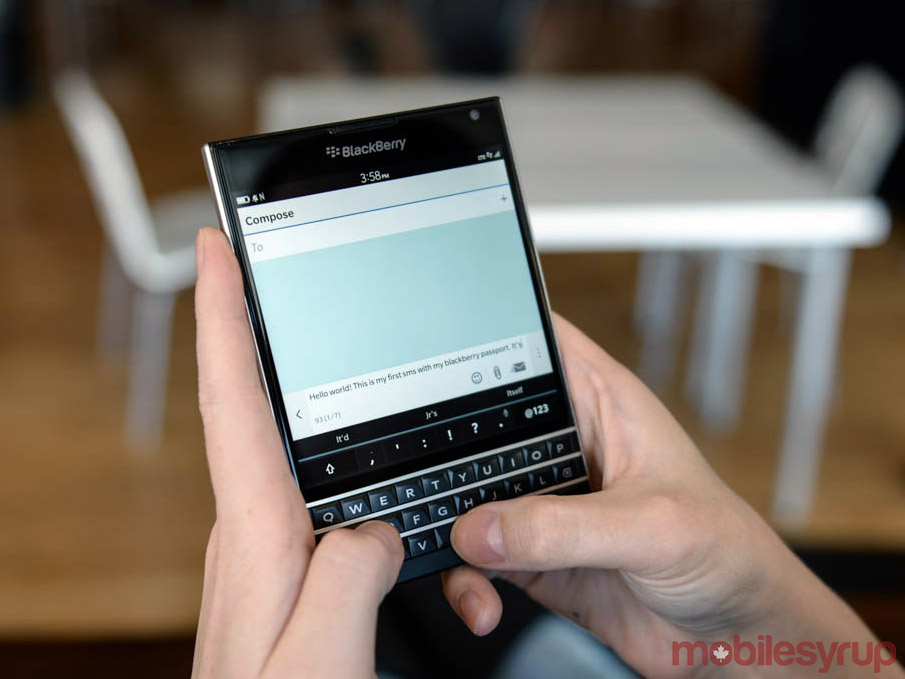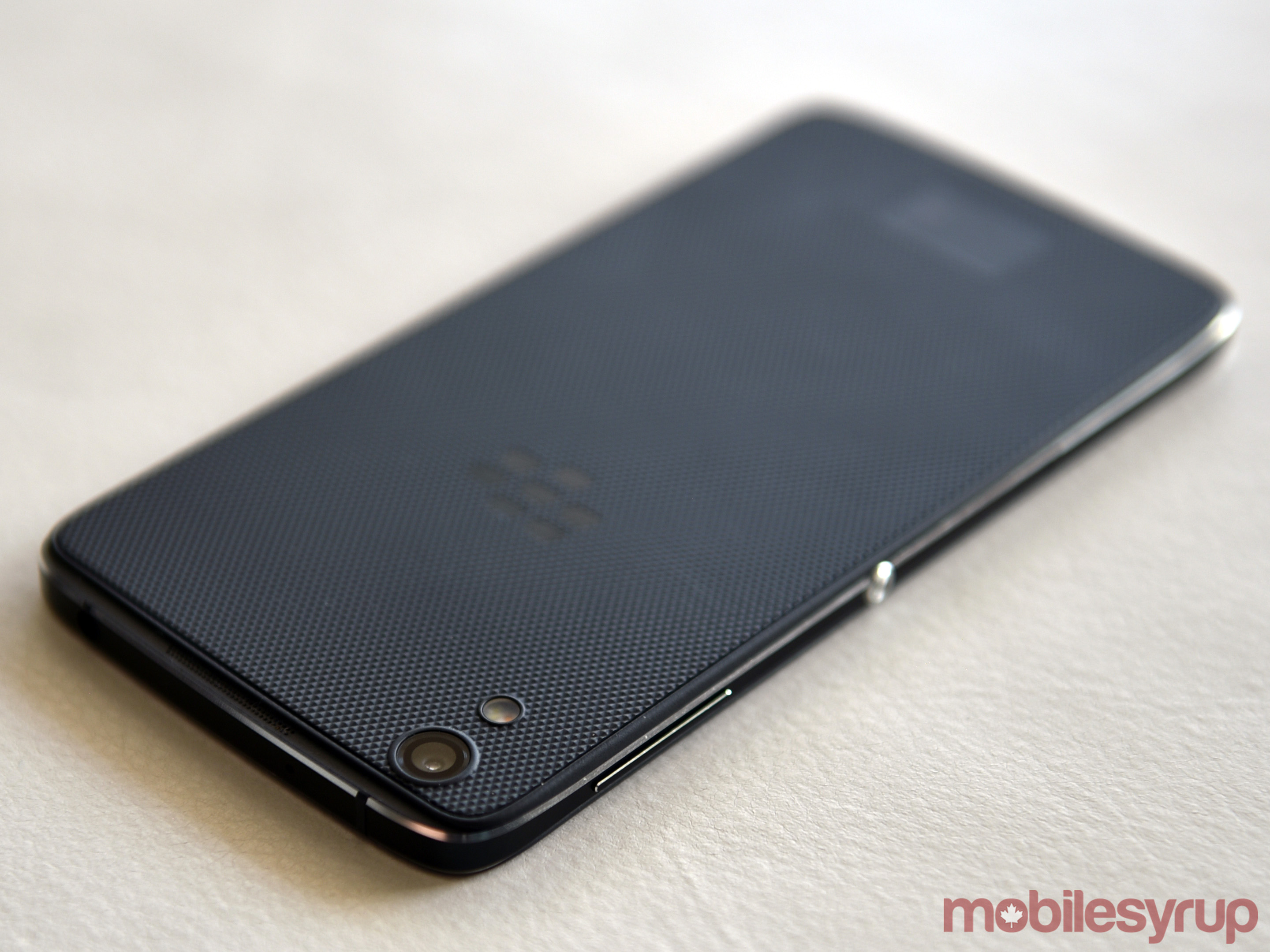
Late last week an individual from London, Ontario posted a listing to Kijiji that drew a lot of interest from MobileSyrup readers.
In it, the poster in question claimed they had in their possession a BlackBerry Passport Silver Edition that had come pre-installed with Google’s Android mobile operating system. No less interesting, they were willing to part with a piece of BlackBerry history for a paltry $260.
That post has since been taken down from Kijiji. After both CrackBerry and MobileSyrup, as well as several other websites, wrote about the listing, it’s likely the person who put up the listing got far more interest than they had bargained for when they made the initial decision to sell an unreleased device.
In any case, the listing was more interesting as a look back at what could have been.
For a lot of MobileSyrup readers, the Passport is emblematic of so many of BlackBerry’s strategic missteps in recent years. While it was not a commercial success, the Passport has its devout fans. Its 1:1 screen resolution and Hub functionality made the Passport unique and interesting, even as BB10’s weak app ecosystem ensured it was a non-starter for most consumers.
So when rumours started filtering out of Waterloo partway through last year that BlackBerry was working on an Android-powered Passport, a lot of the company’s fans became excited; here finally was the device BlackBerry faithful had been asking for years.
There was just one cause for concern: more often than not, the leaks that were coming out detailing the BlackBerry Passport Silver Edition conflicted one another.
In some leaks, including one that came from Evan Blass, the device was codenamed Oslo and it was set to come with Android (like in the video above). In yet other leaks the exact same device was a BB10 smartphone called Dallas that BlackBerry planned to sell exclusively in markets outside of Canada and the U.S. Some leaks even used the two codenames interchangeably.
Discuss. Further reading: http://t.co/eI0FFZu3Ng pic.twitter.com/zcydqV5ccV
— Evan Blass (@evleaks) August 19, 2015
After speaking to multiple sources with direct knowledge of BlackBerry’s product roadmap at that time, MobileSyrup can now shed light on ‘Avengers,’ BlackBerry’s Android device development program.
Part callback to the Marvel comic book and movie series, the codename was meant to encapsulate BlackBerry’s hopes for its first foray into Android: BB10 couldn’t be saved, but at least it could be avenged with the help of the world’s most popular mobile operating system.
According to our sources, it’s likely that one of the first rumoured BlackBerry Android devices was known internally as Oslo. It is the device that appeared on Kijiji on Thursday and in numerous leaks leading up to the release of the Silver Edition we have today. It’s also exactly what it looks like: a re-purposed BlackBerry Passport running Android.
That last fact is also part of the reason why Oslo was never released to the public.
On page 35 of the most version of recent version of the Android Compatibility Certification Document (Android OEMs must adhere to the guidelines set out in this document if they want to release an Android device with access to any part of the Google Play Services ecosystem), Google states any non-Watch Android devices must either use a 4:3 or 16:9 screen aspect ratio.
Oslo was intended to be BlackBerry’s first Android release, and BlackBerry and Google worked together to make core Google apps like Gmail and Chrome compatible with the Passport’s 1:1 aspect ratio.
However, the amount of time and effort required to make Google Play Services work at such an unusual aspect ratio for essentially one device was deemed not worth it; the decision to scuttle Oslo was made by both BlackBerry and Google — though other factors also played a role, according to our sources.
It’s unclear if BlackBerry started development Oslo and Dallas at the same time, though we can confirm that all ‘Avengers’ devices featured European codenames, while BB10 smartphones in development during this era instead used U.S. city codenames. Furthermore, what is clear is that the Avengers program continued in some form following the death of the Passport Silver Edition.
The Priv, for example, what we know of today as BlackBerry’s first Android smartphone, was one of a number of devices on the company’s Android product development roadmap. It was known internally known as Venice at BlackBerry.
During this same time period, BlackBerry was also working on an entry-level Android device codenamed Prague. While Prague may have informed parts of the outsourced DTEK50, BlackBerry’s second Android smartphone, they are two distinct devices; the DTEK50’s internal codename was Neon.
We don’t know much about BlackBerry’s current future plans other than the fact the company is working on a device that could end up entering the market known as the DTEK60. For the time being, it appears the company has moved past the Avengers program; both the DTEK50’s codename and the fact that it was made by a third-party OEM suggest as much.
Moreover, whether the Avengers program and the lineup of devices it produced were successful in their intended purpose is up for debate, though it’s likely that the project included many other devices that were either cancelled or outsourced.
It’s also worth noting that BB10 innovations like the Hub live on in Android via the Hub+ app. However, with the company’s second quarter earnings fast approaching and BlackBerry CEO John Chen’s expected to make a decision on whether BlackBerry will stay in handset business, the Passport could quickly become one of the company’s final smartphones.
Related: BlackBerry DTEK50 review: Pushing the security narrative
MobileSyrup may earn a commission from purchases made via our links, which helps fund the journalism we provide free on our website. These links do not influence our editorial content. Support us here.




